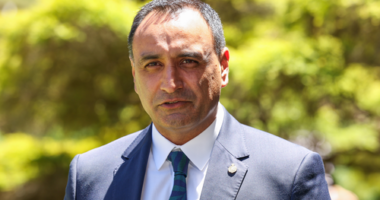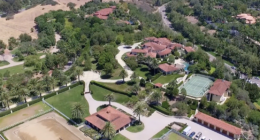Share this @internewscast.com
US stealth bombers executed a meticulously coordinated surprise attack on Iran’s nuclear sites.
Iranian air missile systems did not see bombers, US says
The B-2 bombers dropped 14 bunker-busting GBU-57 Massive Ordnance Penetrators, each weighing 30,000 pounds (13,600 kg). The operation involved over 125 US military aircraft, according to the Pentagon.
From the US military’s perspective, the operation was a resounding tactical success. The Iranians were unable to get off a single round at the American aircraft and were caught completely flat-footed, General Dan Caine, the chairman of the Joint Chiefs of Staff, told reporters at the Pentagon on Sunday.
“Iran’s fighters did not fly, and it appears that Iran’s surface to air missile systems did not see us throughout the mission,” Caine said. “We retained the element of surprise.”
The Pentagon reports significant damage from the mission, with Iran unable to launch a counterattack.
US defence secretary Pete Hegseth was more confident.
“It was clear we devastated the Iranian nuclear program,” he said, standing alongside Caine in the Pentagon briefing room.
Commercial satellite imagery indicated the US attack on Iran’s subterranean Fordow nuclear plant severely damaged or destroyed the deeply-buried site and the uranium-enriching centrifuges it housed, but the status of the site remained unconfirmed, experts said.
International Atomic Energy Agency director general Rafael Grossi has told CNN it was not yet possible to assess the damage done underground.
A senior Iranian source told Reuters that most of the highly enriched uranium at Fordow had been moved elsewhere before the attack. Reuters could not immediately corroborate the claim.
Gulf states remain vigilant as the US threatens further strikes if Iran retaliates or resumes nuclear activities.
‘Very few people’ in Washington in the know
Midnight Hammer was highly classified, Caine said, “with very few people in Washington knowing the timing or nature of the plan”.
Many senior officials in the United States only learned of it on Saturday night from President Donald Trump’s first post on social media.
Hegseth said it took months of preparations to ensure the US military would be ready if Trump ordered the strikes. Caine said the mission itself, however, came together in just a matter of weeks.

Nuclear facilities in Iran. Source: Getty / Anadolu
What happens next?
Gulf states, home to multiple US military bases, were on high alert on Sunday as they weighed the risks of a widening conflict in the region.
Guarding against blowback, the US military also dispersed US military assets in the Middle East and heightened force protection for US troops.
Hegseth said the US military was positioned to defend itself in the Middle East, but also to respond against Iran if it goes through with longstanding threats to retaliate.
The Trump administration said it is not looking for a wider war with Iran, with Hegseth saying private messages had been sent to Tehran encouraging them to negotiate.
But Trump has also warned Iran that the US is prepared to hit additional targets if needed, using far greater force.
“Iran would be smart to heed those words. He said it before, and he means it,” Hegseth said.













